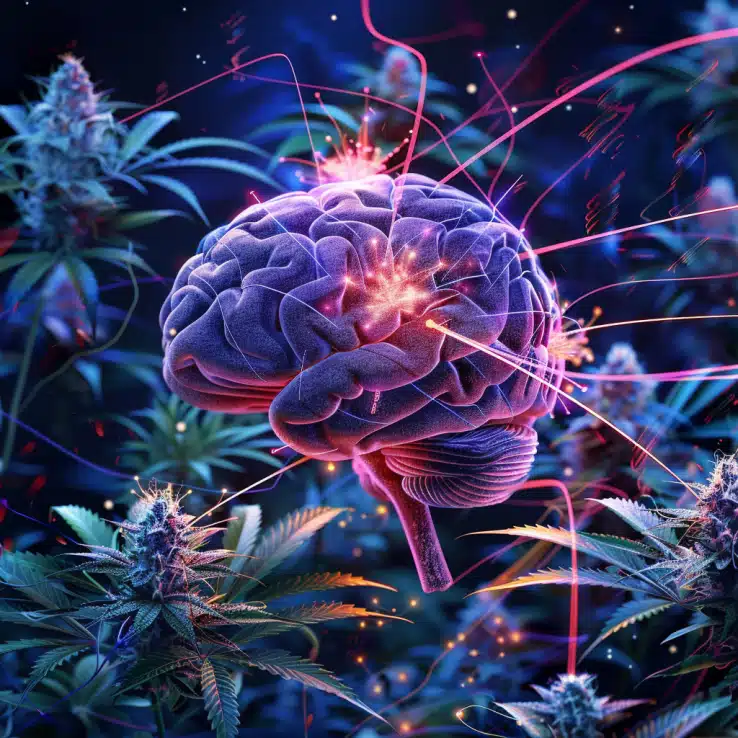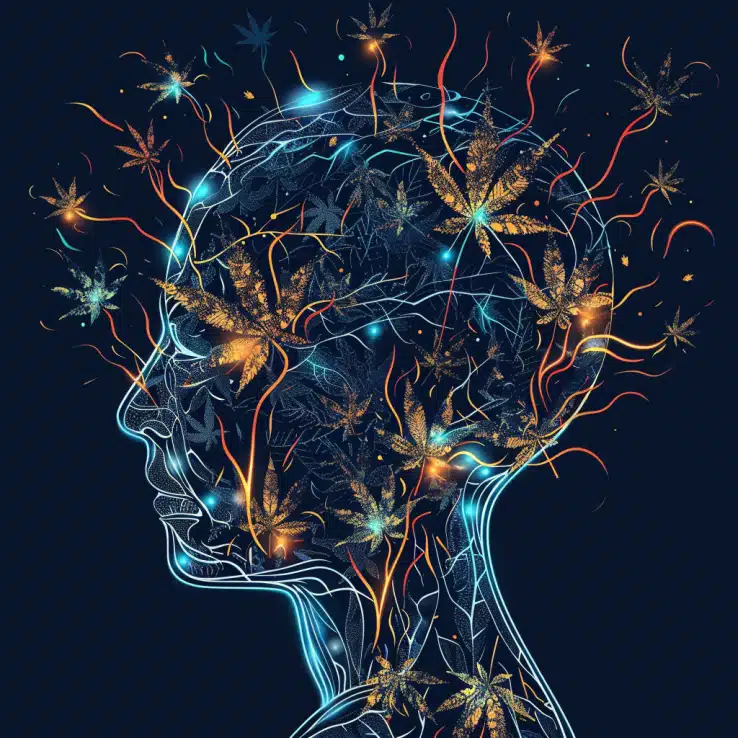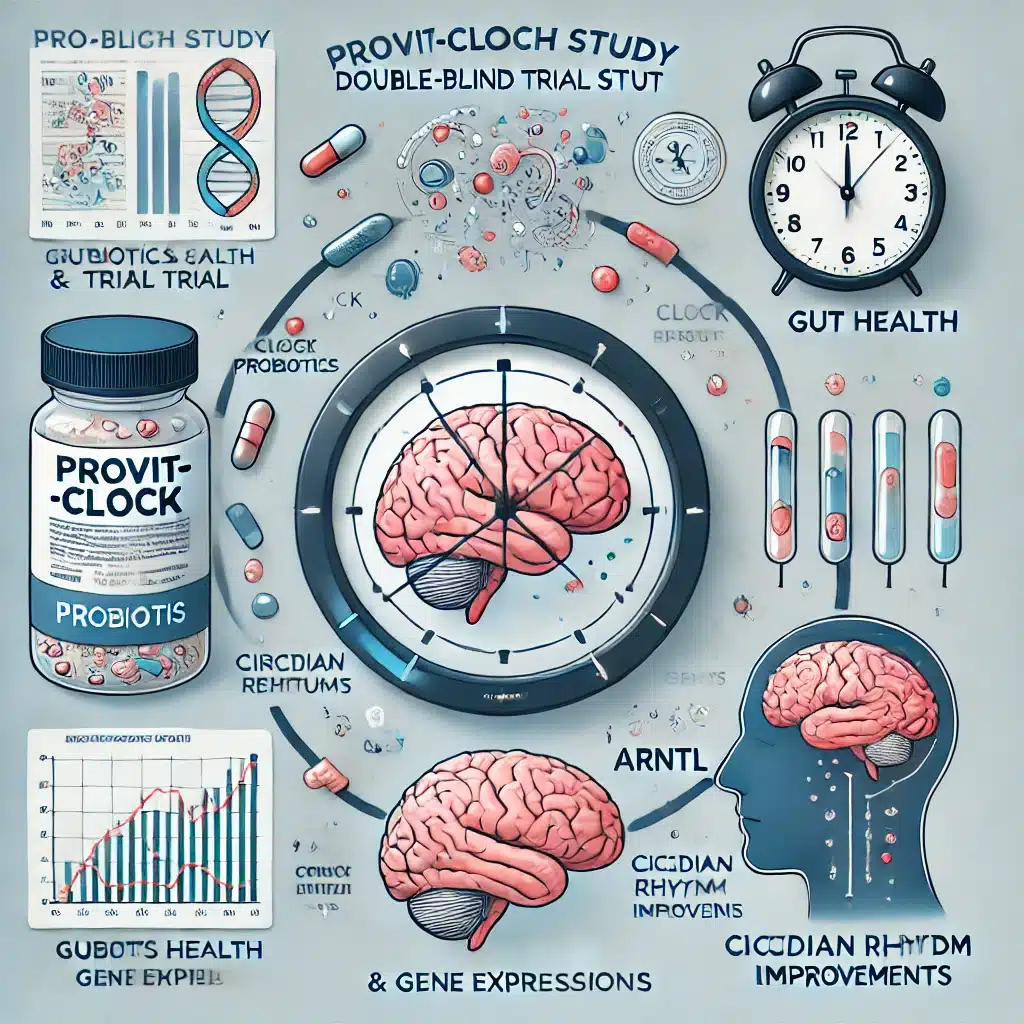Individuals at risk for cannabis use disorder (CUD) exhibit increased dynamic fluidity and altered connectivity patterns in brain networks, suggesting early changes in brain function that may contribute to cannabis addiction risk.
Highlights:
- At-risk individuals for cannabis addiction show a greater number of meta-states and more frequent transitions between them, indicating higher dynamic fluidity in brain connectivity.
- These individuals dwell longer in a specific state characterized by higher within-network and reduced between-network connectivity involving subcortical, sensory-motor, visual, cognitive-control, and default-mode networks.
- Altered connectivity patterns suggest instability and changes in brain network engagement, potentially contributing to CUD risk.
- Dynamic functional connectivity (dFNC) changes could serve as biomarkers for early intervention and treatment targets in preventing CUD progression.
Source: Addiction Biology (2024)
Major Findings: Cannabis Addiction vs. Brain Connectivity (2024)
Fazio et al. evaluated the brain mechanisms underlying the risk of Cannabis Use Disorder (CUD) by examining dynamic functional connectivity (dFNC) in individuals at risk compared to controls.
1. Increased Dynamic Fluidity in Brain Connectivity
Finding: At-risk individuals demonstrated a higher number of meta-states and more frequent transitions between them compared to controls.
- Meta-states: These are patterns of brain network connectivity that change over time. More meta-states mean that the brain’s connectivity patterns are more variable.
- Frequent Transitions: At-risk individuals switched between these meta-states more often, suggesting that their brain connectivity is less stable and more fluid.
- Implications: This increased fluidity indicates that the brain networks in at-risk individuals are constantly changing, potentially making it harder for these networks to maintain stable functions. This instability may contribute to behaviors associated with CUD.
2. Prolonged Dwell Time in Specific Connectivity States
Finding: At-risk individuals spent more time in a particular connectivity state characterized by high within-network and reduced between-network connectivity.
- Connectivity State 3: This state showed strong connections within certain brain networks (subcortical, sensory-motor, visual, cognitive-control, and default-mode) but weaker connections between these networks.
- Subcortical Network: Involves regions like the nucleus accumbens and the ventral tegmental area, which are crucial for reward processing and addiction.
- Implications: Spending more time in this state suggests that at-risk individuals’ brain networks are working more independently rather than in a coordinated manner. This can lead to issues with reward processing and cognitive control, making them more susceptible to CUD.
3. Altered Connectivity in Key Brain Networks
Finding: Specific brain networks showed significant changes in connectivity patterns in at-risk individuals.
- Subcortical Network: Enhanced within-network connectivity, particularly in regions associated with reward and addiction.
- Sensorimotor & Visual Networks: Altered connectivity in these networks suggests that cannabis use affects sensory processing and motor functions.
- Cognitive-Control & Default-Mode Networks: Changes in these networks, which are crucial for decision-making, self-regulation, and attention, indicate potential impairments in cognitive functions.
- Implications: These altered connectivity patterns highlight how cannabis use can disrupt the normal functioning of various brain networks, contributing to the risk of developing CUD.
4. Potential for Early Intervention & Treatment
Finding: The findings suggest that dFNC alterations can be used to identify individuals at risk for CUD and provide targets for early intervention.
- Biomarkers: The altered connectivity patterns can serve as biomarkers to identify individuals at high risk for CUD.
- Preventive Interventions: By identifying at-risk individuals early, interventions can be implemented to prevent the progression to full-blown CUD.
- Treatment Targets: Understanding the specific brain networks involved in CUD risk can help develop targeted treatments, such as pharmacological or neurostimulation therapies.
- Implications: These insights pave the way for more effective prevention and treatment strategies for CUD, potentially reducing the burden of cannabis addiction on individuals and society.
5. Need for Longitudinal Studies
Finding: The study highlights the necessity of longitudinal research to confirm the role of dFNC changes in the development of CUD.
- Longitudinal Approach: Following individuals over time will help determine how these brain connectivity changes evolve and contribute to the onset of CUD.
- Validation of Biomarkers: Long-term studies can validate the identified biomarkers and their predictive value for CUD risk.
- Implications: Longitudinal research will provide a clearer picture of the causal relationship between brain connectivity dynamics and CUD, leading to more precise interventions.
Potential Reasons for Altered Brain Connectivity in Cannabis Use Disorder

1. Preexisting Brain Activity
Vulnerability: Some individuals may have preexisting brain connectivity patterns that make them more susceptible to addiction. This vulnerability can manifest as altered functional connectivity in networks involved in reward processing, cognitive control, and emotional regulation.
Dynamic Fluidity: Individuals with inherently higher dynamic fluidity in brain connectivity may struggle to maintain stable and goal-oriented network functions, increasing the risk of developing addictive behaviors.
2. Impact of Cannabis Use on Brain Connectivity
Neurochemical Changes: Chronic cannabis use can alter neurochemical pathways, particularly those involving dopamine, GABA, and glutamate. THC, the active component in cannabis, affects the brain’s reward system by increasing dopamine release, which can lead to changes in connectivity within and between key brain networks.
Functional Disruption: Prolonged cannabis use can disrupt the balance between excitatory and inhibitory signals in the brain, particularly in regions associated with reward (e.g., nucleus accumbens) and cognitive control (e.g., prefrontal cortex). This disruption can result in altered connectivity patterns observed in individuals with CUD.
3. Genetics & Epigenetics
Genetic Predisposition: Certain genetic factors can increase an individual’s risk for CUD. Variants in genes related to the endocannabinoid system, dopamine signaling, and other neurobiological pathways may predispose individuals to both altered brain connectivity and a higher risk of addiction.
Epigenetic Modifications: Cannabis use can lead to epigenetic changes that affect gene expression. These modifications can alter neural circuits and connectivity, contributing to the development and persistence of CUD.
4. Multifactorial Interaction
Combined Influence: The development of CUD likely results from an interplay of preexisting brain activity, the impact of cannabis use, genetic predisposition, and environmental factors.
Environment: Stressful life events, childhood trauma, and socio-economic factors can interact with genetic predispositions and brain connectivity patterns, increasing the risk of CUD.
Comorbid Conditions: Mental health disorders such as anxiety, depression, and ADHD can also influence and be influenced by altered brain connectivity, creating a complex bidirectional relationship with CUD.
5. Bidirectional Relationship
Preexisting vs. Induced Changes: It is challenging to disentangle whether altered brain connectivity leads to CUD or if cannabis use induces these changes. Evidence suggests a bidirectional relationship.
Preexisting Alterations: Vulnerable individuals may have preexisting connectivity patterns that predispose them to addiction.
Cannabis-Induced Changes: Regular cannabis use further alters brain connectivity, reinforcing addictive behaviors and potentially leading to long-term changes in brain function.
6. Specific Mechanisms
Reward Pathway Hyperactivation: Cannabis use leads to hyperactivation of the mesocorticolimbic dopamine pathway, increasing the salience of drug-related cues and contributing to compulsive use.
Inhibitory Control Impairment: Changes in GABAergic and glutamatergic signaling between the prefrontal cortex and subcortical regions can impair decision-making and self-regulation, making it harder to resist cannabis use despite negative consequences.
Stress Response Alteration: Chronic cannabis use can affect the brain’s stress response system, including the hypothalamic-pituitary-adrenal (HPA) axis and the amygdala, leading to impaired emotional regulation and increased vulnerability to addiction.
Strategies to Counteract Cannabis Use Disorder (CUD) via Targeting Brain Connectivity

1. Pharmacological Interventions
Cannabinoid Receptor Modulators
- Mechanism: Drugs that target cannabinoid receptors (e.g., CB1 antagonists) can help normalize the dysregulated endocannabinoid system.
- Examples: Rimonabant (though its use is limited due to psychiatric side effects), new-generation drugs with better safety profiles.
Dopamine Modulators
- Mechanism: Medications that stabilize dopamine levels can address the altered reward processing pathways seen in CUD.
- Examples: Amantadine, bupropion, and other dopamine agonists or reuptake inhibitors.
GABAergic & Glutamatergic Agents
- Mechanism: Drugs that modulate GABA or glutamate signaling can help restore the balance between excitatory and inhibitory neurotransmission.
- Examples: Gabapentin, topiramate, and acamprosate.
2. Neurostimulation Techniques
Transcranial Magnetic Stimulation (TMS)
- Mechanism: TMS can modulate brain activity by targeting specific regions involved in addiction, such as the prefrontal cortex.
- Application: Repeated sessions of TMS have shown promise in reducing cravings and improving cognitive control.
Deep Brain Stimulation (DBS)
- Mechanism: DBS involves implanting electrodes in specific brain regions (e.g., nucleus accumbens) to regulate abnormal neural activity.
- Application: Though still experimental for CUD, DBS has shown efficacy in treating other substance use disorders.
3. Behavioral & Cognitive Therapies
Cognitive Behavioral Therapy (CBT)
- Mechanism: CBT helps individuals recognize and change maladaptive thought patterns and behaviors associated with cannabis use.
- Application: Structured sessions focusing on cognitive restructuring, coping strategies, and relapse prevention.
Mindfulness-Based Interventions
- Mechanism: Mindfulness practices can enhance self-awareness and emotional regulation, counteracting the impulsivity and stress reactivity linked to CUD.
- Examples: Mindfulness-Based Stress Reduction (MBSR) and Mindfulness-Based Cognitive Therapy (MBCT).
Contingency Management (CM)
- Mechanism: CM uses positive reinforcement to encourage abstinence from cannabis use.
- Application: Individuals receive tangible rewards (e.g., vouchers, prizes) for verified abstinence, promoting behavioral change.
4. Digital & Technological Solutions
Neurofeedback
- Mechanism: Neurofeedback trains individuals to regulate their brain activity through real-time feedback from EEG or fMRI.
- Application: Sessions focus on normalizing connectivity patterns in regions implicated in addiction, such as the prefrontal cortex.
Mobile Health (mHealth) Apps
- Mechanism: mHealth apps can provide on-the-go support, track usage patterns, and offer interventions based on user data.
- Examples: Apps that deliver CBT modules, mindfulness exercises, and social support networks.
5. Lifestyle & Environmental Modifications
Exercise
- Mechanism: Regular physical activity can enhance brain plasticity, improve mood, and reduce cravings by modulating neurotransmitter systems.
- Application: Incorporating aerobic and resistance training into daily routines.
Healthy Diet
- Mechanism: A balanced diet can support overall brain health and optimize neurotransmitter function.
- Application: Diets rich in omega-3 fatty acids, antioxidants, and other brain-supportive nutrients.
Stress Management
- Mechanism: Effective stress management techniques can mitigate one of the major triggers for cannabis use.
- Examples: Yoga, meditation, deep-breathing exercises, and progressive muscle relaxation.
6. Social & Supportive Interventions
Peer Support Groups
- Mechanism: Social support from peers can provide encouragement, accountability, and a sense of community.
- Examples: Marijuana Anonymous (MA), 12-step programs, and other support groups.
Family Therapy
- Mechanism: Family therapy addresses the interpersonal dynamics and environmental factors contributing to CUD.
- Application: Involves family members in the treatment process to improve communication and support recovery.
Conclusion: Cannabis Addiction & Brain Connectivity
This study provides significant insights into the dynamic functional connectivity (dFNC) alterations associated with the risk of Cannabis Use Disorder (CUD).
Individuals at risk for CUD exhibit increased dynamic fluidity and prolonged dwell time in specific connectivity states, particularly those involving subcortical, sensorimotor, visual, cognitive-control, and default-mode networks.
These findings suggest that the brain networks of at-risk individuals are less stable and more independently functioning, which could contribute to the development of addictive behaviors.
By identifying these early connectivity changes, the study highlights potential biomarkers for early intervention and treatment strategies aimed at preventing the progression to full-blown CUD.
Future longitudinal studies are essential to confirm these findings and establish the causal relationship between brain connectivity dynamics and CUD development.
Overall, this research underscores the importance of targeting brain connectivity abnormalities in developing effective prevention and treatment approaches for CUD.
References
- Study: The risk of cannabis use disorder is mediated by altered brain connectivity: A chronnectome study (2024)
- Authors: Giovanni Fazio et al.








